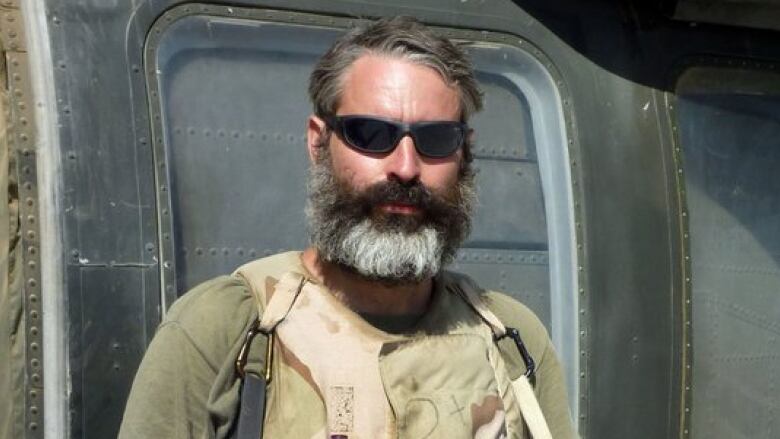Alan Kurdi photo changes conversation, photographer says
Louie Palu, Canadian photojournalist who covered Afghanistan, reflects on photo of dead Syrian boy

When photojournalist Louie Palu saw the photo of a dead Syrian boy washed up on a Turkish beach, he thought the same thing many people thought.
What if that was my son?
Palu has covered war in the past as a photographer in Afghanistan. When he saw the photo of 3-year-old Alan Kurdi, he knew the impact it would have.
"The conversation about the migrant crisis is going to changenow,'" he told On The Coast guest host Gloria Macarenko. "This photograph is a reminder that we can't disconnect ourselves from the tragedies of the world."
"That's what makes this photograph so powerful: it's universality in making us feel empathetic. We could be experiencing the horror and the tragedy of what that father might be experiencing. It's quite shocking to us."
- Alan Kurdi's death a wakeup call for government
- Syrian refugee Alan Kurdi's photograph sparks social media tributes
- Little Alan Kurdi, washed ashore, suddenly refocuses Syrian tragedy: Nahlah Ayed
Palu says the importance of photos like the one of Alan are that they effect change. When we're able to connect with the subject of a photo, we're more able to understand the human aspects and impacts of a story that otherwise might feel distant.
"Camera as a shield"
Palu says that photojournalists working in places of conflict never know what they'll see when they get up in the morning.
Some days, it might seem like you're just going out to cover the weather, and then a bombing happens.
He believes that,just like everyone who saw the photo of Alan, hewas surprised and shocked, the photographer who snapped it likely felt the same way.
"This cliche of the camera as a shield or a buffer, it's not true," he said. "When you're shooting something like this you hear sounds, there's smells, and there's just a personal experience, because war is a personal experience, that lasts with you forever."
He said that while audiences will be affected by the photograph, and many might be moved to make change, they will move on as other crises arise. But photojournalists who take these photographs have a harder time moving on, and covering conflicts can wreak havoc on their mental health.
"That could happen to us"
Palu likens the photo of Alan on the beach to the famous "Tank Man" photo of a single defiant young manblocking aline of tanks in Tiananmen Square in 1989.
Even though that photo did not bring about immediate change in China, it did help us understand the human spirit and put ourselves in his shoes.
The photo of Alan, he says, has a similar effect.
"We think, wow, what if that was my son? Who dressed him in the morning? Could I have put his little sandals on?" he said. "It makes it feel like that could happen to us."
Palu's hope is that this photograph, like so many other famous photos, could spark more people to get involved giving donating and doing other things to help alleviate the current crisis.
To hear the full interview, click the audio labelled:War photographer on Alan Kurdi photo: what if this was my son?












_(720p).jpg)


 OFFICIAL HD MUSIC VIDEO.jpg)
.jpg)



























































































